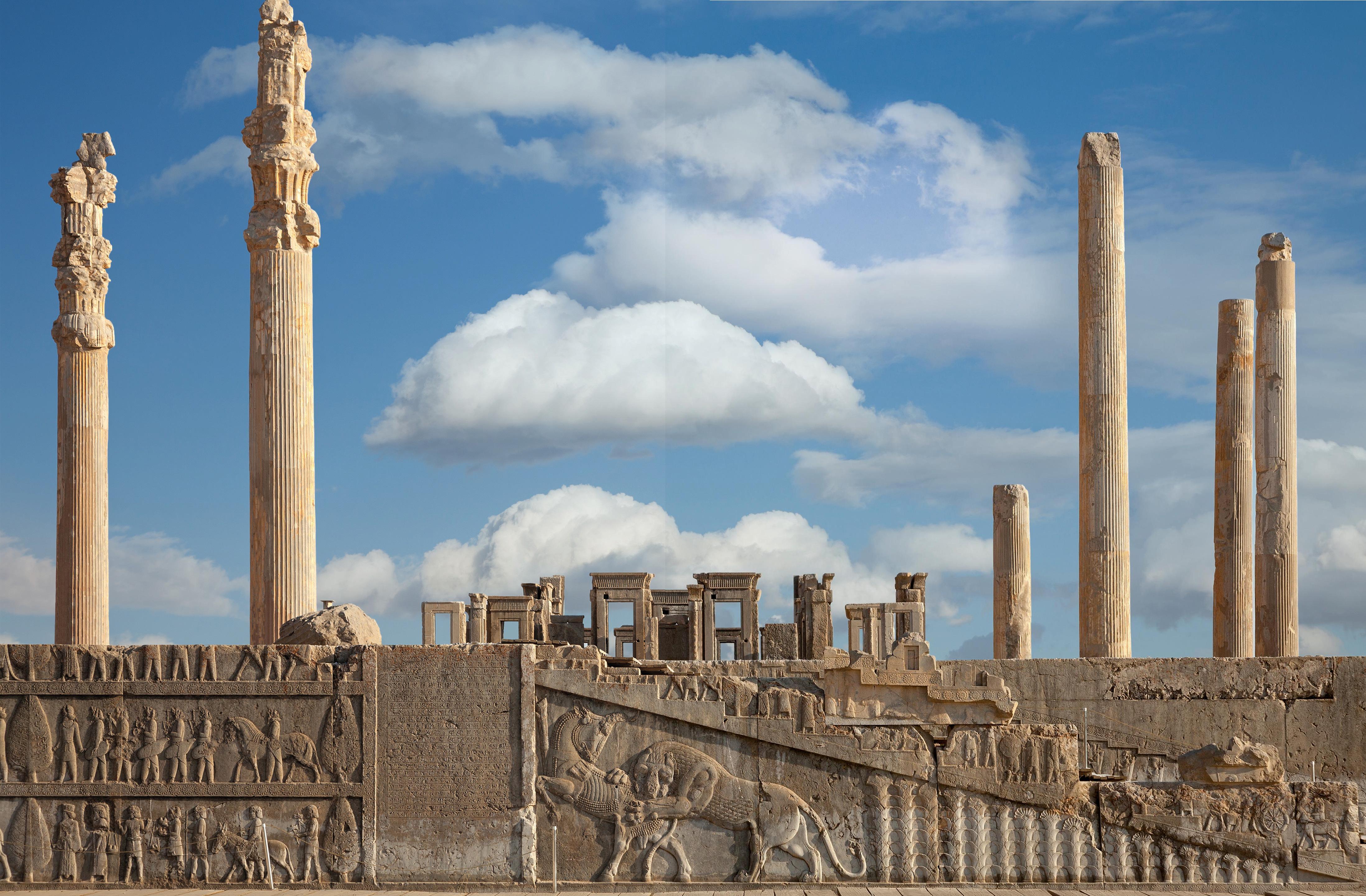
As visitors to Persepolis, capital of the Persian Achaemenid Empire, entered the city, they would approach a stone terrace on which a palatial precinct rose 40 feet above the fertile flatlands at the foot of Kuh-i-Rahmat, the Mountain A of Mercy. Bearing gifts from their homelands-perhaps a metal chalice or a braying donkey-they would ascend 63 limestone steps, pivot on a landing, then climb another 48 steps to an imposing threshold known since antiquity as the Gate of All Nations. Flanking the four-story-tall gate were statues of lamassu, winged bulls with human heads and curly beards.
The great city was founded by the Persian king Darius I around 518 B.C. in present-day Iran and construction continued for nearly 200 years. For the duration of its existence, the ever-expanding metropolis was a royal estate, a bustling construction site, and an urban center that housed as many as 45,000 residents nourished by surrounding orchards and farmlands.
Glazed bricks adorned the entryway’s interior, and two identical trilingual texts, inscribed in Old Persian, Elamite, and Babylonian, read: “I, Xerxes, the great king, king of kings, king of the countries possessing many kinds of people, king of this great earth far and wide, the son of Darius the king, the Achaemenid.” Travelers would have continued through the gate onto the royal terrace, a massive 30-acre platform filled with spacious meeting halls and palaces where reliefs depicted kings receiving attendants and taming fierce creatures. The walls would have glowed from the hues of glazed tiles, murals, and inlaid gold, silver, and precious minerals. Painted with especially vibrant blues, Persepolis was an oasis that stood out from the hazy plains, says archaeologist Alexander Nagel of the Fashion Institute of Technology.
Denne historien er fra July/August 2023-utgaven av Archaeology.
Start din 7-dagers gratis prøveperiode på Magzter GOLD for å få tilgang til tusenvis av utvalgte premiumhistorier og 9000+ magasiner og aviser.
Allerede abonnent ? Logg på
Denne historien er fra July/August 2023-utgaven av Archaeology.
Start din 7-dagers gratis prøveperiode på Magzter GOLD for å få tilgang til tusenvis av utvalgte premiumhistorier og 9000+ magasiner og aviser.
Allerede abonnent? Logg på
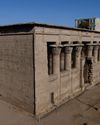
AN EGYPTIAN TEMPLE REBORN
By removing centuries of soot, researchers have uncovered the stunning decoration of a sanctuary dedicated to the heavens

THE SHELL SEEKERS
How hunter-gatherers in northern Florida facing an uncertain future revived a powerful symbol of their past

The Secrets of Porvenir
Remembering the victims of a 1918 massacre that shook a Texas border community

UNEARTHING ANELUSIVE EMPIRE
Archaeologists have discovered rare evidence of an enlightened medieval dynasty that ruled much of Central Asia
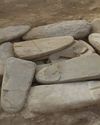
Ahead of Their Time
Excavations reveal the surprising sophistication of Copper Age villagers in southwestern Iran 6,000 years ago
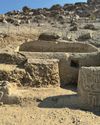
ORIGINS OF PERUVIAN RELIGION
While investigating looters' holes at the site of La Otra Banda in northern Peru's Zaña Valley, archaeologist Luis A. Muro Ynoñán of the Field Museum and the Pontifical Catholic University of Peru spotted carved blocks around seven feet below the surface.
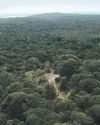
ISLAND OF FREEDOM
Many of the enslaved Africans sent to Brazil beginning in 1549 were from what is now Angola, where one of the most widely spoken languages was Kimbundu.
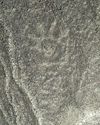
NAZCA GHOST GLYPHS
From the 1940s to the early 2000s, geoglyphs were discovered in the Nazca Desert of southern Peru depicting animals, humans, and other figures at the rate of 1.5 per year.
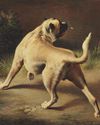
COLONIAL COMPANIONS
The ancestry of dogs in seventeenth-century Jamestown offers a window into social dynamics between Indigenous people and early colonists.

BAD MOON RISING
The British Museum houses around 130,000 clay tablets from ancient Mesopotamia written in cuneiform script between 3200 B.C. and the first century A.D.